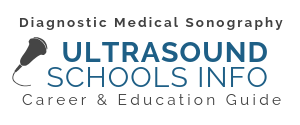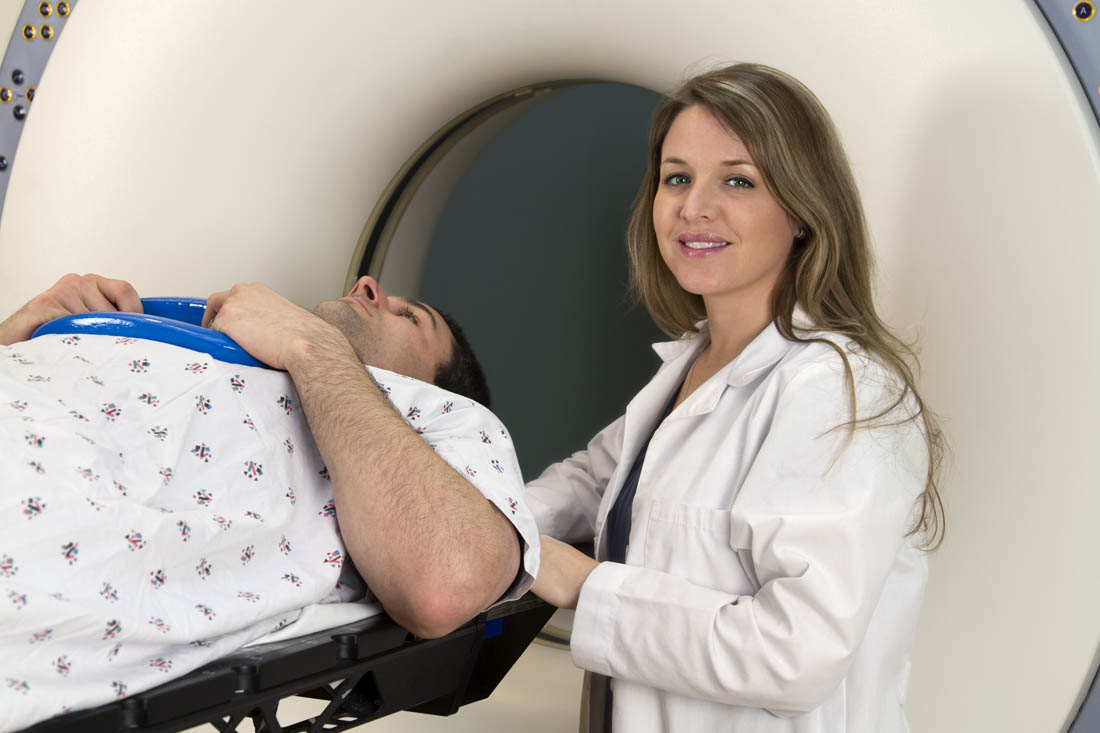MRI technology does not rely on radioactive isotopes but combines magnetism with radio waves. It is used to capture cross-sectional images of internal structures like the brain, spinal chord, heart, blood vessels, breasts, bones and joints.
Most MRI technologists conduct the non-invasive, imaging tests for medical procedures, but who knows where your skills and expertise will bring you.
A Career as an MRI Technician
An MRI Technician (also called an MRI technologist or MRI tech) is a radiologic technologist specialized at performing magnetic resonance imaging scans.
An MRI technician is a vital member of the healthcare team, particularly essential in helping diagnose either acute or chronic diseases or abnormalities. For example, images of the brain and spinal chord may lead to diagnoses of multiple sclerosis, Alzheimer’s disease, Parkinson’s disease, brain tumors and more.
MRIs can also help diagnose breast cancer, damage after a heart attack, blood vessel aneurysms, prostate cancer, arthritis, sports injuries associated with muscles, tendons and ligaments and a variety of other health complications.
MRI technologists work closely with physicians (they perform MRIs upon the order of lead physicians) in hospitals, doctors’ offices, diagnostic centers and other healthcare facilities.
They tend to work 40 hour weeks but in emergency situations may be called upon to work on-call, evenings or weekends. MRI techs also help patients prepare for the scans and answer any questions they may have.
MRI Methods and Instrumentation
There are various types of MRI scanners depending on the area of the body being imaged and the patient’s needs. According to Stanford Health Care, the following are common magnetic resonance imaging examinations:
- Functional MRI (fMRI)
- Breast scans
- Magnetic resonance angiography (MRA)
- Magnetic resonance venography (MRV)
- Cardiac MRI
Patients are required to lie down in closed, cylindrical-shaped vessels in these scanners. “Low-field” scanners, on the other hand, have a lower magnetic field strength, take longer to scan and generate images that are not as detailed as a high-field scanner; but, the machines are open on both sides which allows patients who are claustrophobic or who are overweight to be more comfortable.
There are also “stand-up” and “extremity” MRI scanners where patients do not have to lie down at all; they are used to image the spine, joints and extremities, such as elbows, hands and ankles.
MRI Technologists Salary
According to the Bureau of Labor Statistics, U.S. Department of Labor, Occupational Outlook Handbook, the median annual wage for magnetic resonance imaging technologists was $83,740 in May 2023. Salary and employment figures are based on a national average and may vary by location.
In May 2023, the mean annual wages for magnetic resonance imaging technologists in the top industries in which they worked were as follows:
| Outpatient care centers | $125,470 |
| Medical and diagnostic laboratories | $83,160 |
| Hospitals; state, local, and private | $84,440 |
| Offices of physicians | $81,760 |
MRI Technician Schools
There are several educational options for becoming an MRI Tech, depending on whether you already have post secondary education and experience or are just beginning.
Several MRI Technician schools offer certificate programs for those who already completed an education program in radiologic technology, nuclear medicine, radiation therapy or another related program, and who wish to increase their expertise to include MRI technology.
Some of these schools will also offer the certificate program completely online if you already have clinical/professional experience, while others will offer all of the didactic courses online. Certificate programs generally take less than a year to complete.
Additionally, some schools will offer an Associate degree in Magnetic Resonance Imagining for those who have no previous experience in any medical field. It will include course work and clinical experience and generally takes two-years to complete if pursuing it full time.
Alternatively, you may wish to pursue a Bachelor’s degree in Radiologic Sciences and complete a program that allows you to concentrate on MRI.
When selecting an MRI school, talk to a representative to make sure you will gain the skills and experience needed to sit for the MRI certification exam offered by the ARRT.
MRI Credentials
The American Registry of Radiologic Technologists (ARRT) offers a certification exam in Magnetic Resonance Imaging (MRI). While certification is not required in all states, you’ll notice that most employers either prefer or require candidates to hold such a credential.
To be eligible to sit for ARRT’s certification exam, you must have completed an accredited-educational program in MRI and demonstrate that you meet ARRT’s clinical and didactic requirements, which include patient care, MRI imaging procedures and more. (That is why it is so important to make sure the program you choose to attend is in line with ARRT’s pre-requisites).
The educational requirement will be an academic degree (an Associate’s degree or higher). You can also pursue post-primary MRI certification through the ARRT (if you already have another credential, such as Sonography, Radiography, Radiation Therapy or Nuclear Medicine Technology certification).


